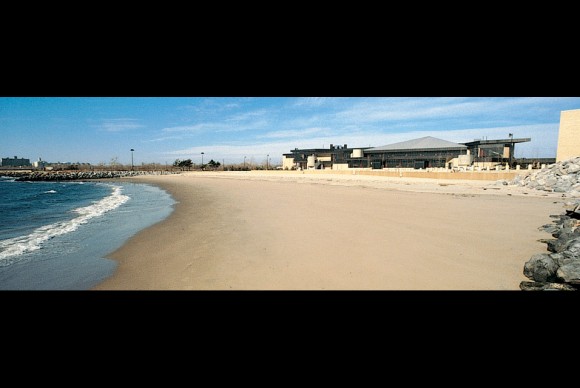Valencian Institute for Modern Art Dedicates Exhibition to Paolo Riani: A World of Architects
December 19, 2010 by All Art News
Filed under Design & Architecture
VALENCIA.- The exhibition dedicated by the IVAM to Paolo Riani comprises, apart from photographs taken all over Europe, America, Japan, Russia and Arabia, a selection of architectonic projects and collections of objects (miniature aeroplanes made of wood or beautiful pieces fashioned in original shapes, ships and ship parts, scale models, etc.) that give us an overview of this architect and city planner, who was a senator of the Italian Republic and has practised his profession as an architect and university professor in Tokyo, New York and several Italian cities such as Florence and Pisa.
A catalogue has been brought out for the exhibition with reproductions of the works displayed and detailed biographical and bibliographical information about the author and texts by José Mª Lozano, Consuelo Císcar, Luis Sendra Mengual and Edward Suzuki.
Paolo Riani was born in Barga, (Lucca) to an American mother and an Italian father. He studied architecture at Florence University, where he was a disciple and collaborator of the urban planner Edoardo Detti. He was awarded a scholarship to specialise in Urban Planning by the Olivetti Foundation and another scholarship to specialise in steel structures by the Steel Technicians’ Association. In 1963, Riani was in charge of the architectural part of an exhibition held at the Palazzo Strocci dedicated to the sculpture and painting production of Le Corbusier, an architect he researched for his first book, a monographic study, made with V. F. Pardo and published in 1966.
He won first prize in the competition for a nursery school in Massa in 1965. That year he moved to Japan, where he remained for six years and developed his career as an architect in Kenzo Tange’s studio in Tokyo, with Arata Isozaki and Kisho Kurokawa. At the same time he lectured at Tokyo University. Among his most outstanding achievements at that time were the Tokyo city plan, his project for Caesar`s Palace nightclub (1969), his first construction on Japanese soil, Aoyama shopping mall and the headquarters of the Mitsubishi Estate Co. in Tokyo. He was awarded the Shinseisaku Prize for Architecture in 1966, 1967 and 1968.
During this period, he travelled around different countries in Asia documenting several cultures as a writer and photographer and publishing these works in several international magazines. He was elected a member of the International House of Japan, of the Shinseisaku Academy and Nihon Kenchiku Shikai. He also published the books Architettura Giapponese Contemporanea (1968) and Kenzo Tange (1969).
On his return to Italy, he gave lectures in architecture and participated in the restoration works on historic centres like Borgo di Ponte, Narni, Pieve di Loppia in Barga and Villa Campani in Prato. That same year he was awarded a Fulbright grant to continue his research in the United Status, so he moved to New York, where he took a master’s degree in Architecture and City Planning and worked as associate professor at Columbia University and the Pratt Institute in New York, and at the universities of Utah, Kentucky and Lexington. In collaboration with James Marston Fitch, he published the architectural treatise The risk of being restored.
In 1974 he travelled to Lebanon, where he designed the urban plan for the Ramlet El Baida district and began to build the Citicorp Center in Beirut, whose construction was interrupted the following year due to the outbreak of civil war. When he returned to Florence, he opened a study and consultancy firm and continued to create projects for Arab countries like Libya, Jordan or Saudi Arabia.
In the nineteen eighties he designed projects from Japan to the United States, built many shopping malls, business and institutional headquarters and, at the same time, he continued to lecture at Florence University. He co-founded the magazine L’Arca with Cesare Casati in 1986, and directed the environmental magazine VIA and collaborated with articles in Casabella, National Geographic, Architectural Record, Kenchiku Bunka, Shoten Kenchicu, Casa Vogue, as well as other specialised magazines. Among other prizes, he was granted the Alcan Award for the best aluminium building erected in Italy in 1989.
Between 1994 and 1998 he abandoned architecture and dedicated himself entirely to politics. He was elected senator of the Republic of Italy and took part in numerous work commissions not only on a national scale but for the European Community, NATO and United Nations too. After this period dedicated to politics, he went back to his profession as an architect and designed projects like the sustainable development plan for Massaciuccoli lake, multi-use complexes for the historic centres of Massa, Viareggio and Lucca, an industrial complex in Monsagrat, a residential estate in Pieve and Nivole, the Resistance Museum in Genoa, Trapani Museum and he worked on the restoration of Ata Vakldera and the Comune di Peccioli. Between 2000 and 2002 he was director of the Italian Cultural Institute in New York. He founded the Italian Cultural Foundation of America (ICFA), a cultural institution for the promotion of Italian culture in the United States. In 2004 he was appointed Architecture professor at the Engineering Faculty of Pisa University and the following year was appointed an honorary member of the Academic Senate of the International Academy of Modern Art (AIAM) in Rome.

